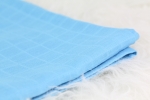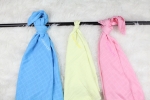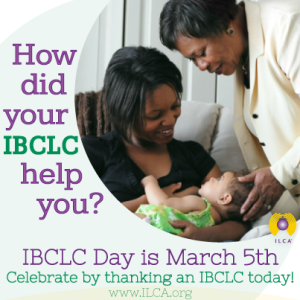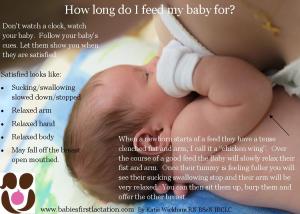Question #1 How to increase supply?
The best way to increase supply is frequent, effective removal of milk from the breast. When concerned about milk supply I cannot stress enough the importance of checking in with a Lactation Consultant. They can do a complete assessment on Mom and Baby to see if there is something that needs improving; often a Mom will feel like she has low milk supply due to normal changes during breastfeeding (supply regulation, cluster feeding, fussy evenings, growth spurts etc). Baby may need a better position or latch, they may have a tongue tie or lip tie that is restricting their movement and suction, or maybe the baby has been put on a schedule or timed feeds. Frequent removal of milk from the breast is key in establishing supply or increasing it. Our breasts have a protein in them that signal our brains when our breast is full of milk to slow down production. So if the milk is not removed frequently our brain gets the signal that the milk is not wanted and slows down production. Increasing removal of milk from the breast is often all that is needed to boost supply.
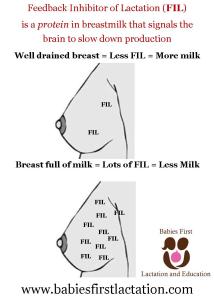
Supplementing leads to less stimulation and removal of milk from your breast, which will drop supply. So if supplementing, ensure you are supported by a Lactation Consultant.
Are you eating enough? Often a Mom will forget to care for herself in those early weeks or maybe she is watching what see eats. Not eating enough can drop supply. So be careful you are not cutting out too many calories. Ideally do not drop below 1800 calories per day. Ensure you stay hydrated by drinking to thirst.
Have you started a new medication that may be contributing to lower supply? Many of the birth control options offered to new Moms are safe to take while nursing but may have the negative impact of decreasing supply.
Some foods that have shown to be beneficial for breast milk supply are: Fennel, oatmeal, carrot, beets, yams, alfalfa, dark green leafy vegetables, nuts, healthy fats, non- alcoholic beer, garlic, ginger, oats, brewers yeast, green papaya, red raspberry leaf tea, goat’s rue.
There are herbs that can increase milk supply. Two of the most commonly recommended herbs are Fennugreek and Blessed Thistle. You can read more about them here: http://www.breastfeedinginc.ca/content.php?pagename=doc-HRMS
In Canada one of the commonly prescribed medications to increase milk supply is Domperidone. I recommend trying the above methods first. You can read more about this medication here: http://www.breastfeedinginc.ca/content.php?pagename=doc-DGS
Eating the supply increasing foods, taking the herbs and/or prescription medication will not work to increase supply if you are not frequently and effectively removing milk from the breast.
Question #2 Teething and Breastfeeding
There were a few questions on teething discomfort. I have a blog specifically on this subject. It should answer all the questions on teething related breastfeeding problems. https://babiesfirstlactation.wordpress.com/2013/09/26/dont-bite-the-boob-that-feeds-you/
Question #3 How can I have a better experience with breastfeeding my second time around?
My biggest recommendation is to consult with a Lactation Consultant prior to delivery to discuss what happened last time and suggestions for your new little one. Here is my blog on “Putting your best breast forward.” I hope the tips in there are helpful.
Question #4 What do I do when the Dr. says we need to supplement with formula?
Doctors vary greatly in their knowledge and support of breastfeeding. I strongly encourage you to seek help from a Lactation Consultant. They can assess the situation and help improve the milk intake at the breast. If supplementing is necessary it is important that the Mom is pumping to tell her body to make more milk and that you are supplementing safe amounts and not over feeding. Supplementing, if needed, should be short term if the goal is to return to just breast. A LC can help you return to exclusive breastfeeding and help with weight gain. Here is my blog which touches on supplementing. https://babiesfirstlactation.wordpress.com/2013/08/09/the-newborns-stomach/
Question #5 How can I get my baby who spent 3 weeks in the NICU to transition from bottle feeding to breastfeeding?
I know I sound like a broken record here…but seeing a Lactation consultant will help with hands on support. Provide your little one with practice at the breast. They often will be more patient breastfeeding if they aren’t overly hungry, so either, offer the breast before they reach their FEED ME NOW phase of hunger, let them have part their bottle then try the breast or allow them practice time after a feed or in between feeds. When latching make it easier on their little mouths by sandwiching your breast. You can watch more on this technique in this video from Standford Univeristy: (skip the first 5 minutes) http://newborns.stanford.edu/Breastfeeding/FifteenMinuteHelper.html Preemies will often take the breast easier using a nipple shield- although I encourage you to consult with a lactation consultant before introducing to check sizing and recommended use. Lots of skin to skin snuggles is beneficial for the baby and breastfeeding and for you and your milk supply. So snuggle, snuggle, snuggle!
I hope I helped answer your questions. Please don’t hesitate to send me a message on my Babies First Lactation and Education facebook page. I’d be glad to explain anything further, help in person if needed or help you find support in your area. I also offer online/phone consultations for anyone outside of my York Region area.
Thank you to Dressed to Deliver Birthing Gowns & Nursing Wraps for hosting this great contest and the breastfeeding question session tonight! Have you entered the great contest? Over $400.00 in prizes. http://tinyurl.com/n5qoayb
Katie Wickham RN, BScN, IBCLC
http://www.babiesfirstlactation.com
info@babiesfirstlactation.com



